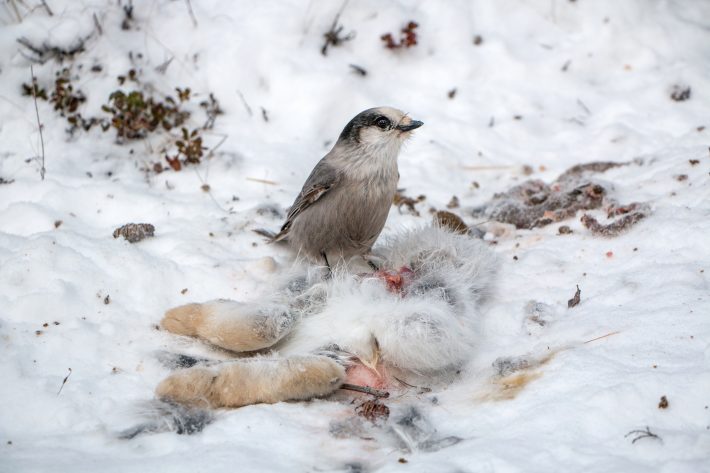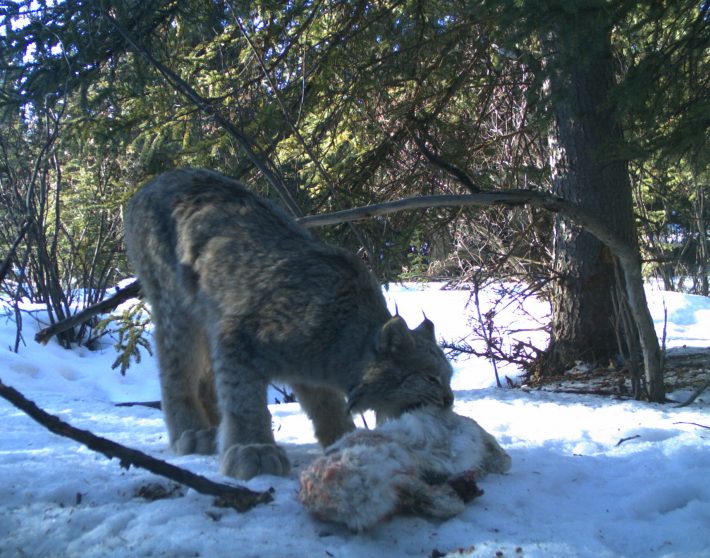Snowshoe hare carcasses feed more then the usual suspects, study shows
University of Alberta press release.
Scientists document 24 different species scavenging snowshoe hare carcasses in the Yukon. Their findings are published in Journal of Animal Ecology.

What do lynx, flying squirrels, ravens, and wolverines have in
common?
They will all scavenge from snowshoe hare carcasses under the right conditions, according to a new study by University of Alberta ecologists. And they’re not alone. In fact, researchers documented 24 different species feeding from snowshoe hare carcasses in Canada’s northern boreal forest.
“This is one of the most diverse scavenger communities recorded,” said lead author Michael Peers, who conducted this research during his PhD studies under the supervision of Professor Stan Boutin in the Department of Biological Sciences.
“Species we may think of as scavengers like common ravens, magpies, and wolverines were recorded, but also species that people might not expect to be scavengers. We documented snowshoe hares, Canada lynx, red squirrels, Northern flying squirrels, arctic ground squirrels, and chipmunks all scavenging.”

The researchers examined the northern boreal forest in the Yukon over a four-year period from 2015 to 2018. Using remote sensing cameras, the researchers examined which animals scavenged from nearly 100 opportunistically placed snowshoe hare carcasses throughout the region.
The results indicate that prey species may have a more complex impact on food webs than previously thought, because their numbers influence both their direct predators as well as other animals who commonly scavenge.
“Scavenging by animals can have important impacts on food webs, but is often overlooked in food web research,” explained Peers. “Our data shows that a lot of species scavenge in the boreal forest of Canada, and that changing temperatures or the abundance of keystone species can impact scavenging communities.”
You can read the paper for free (for a limited time) here:
The paper, “Prey availability and ambient temperature influence carrion persistence in the boreal forest,” was published in the Journal of Animal Ecology (doi: 10.1111/1365-2656.13275).
Media contact:
Katie Willis, katie.willis@ualberta.ca
Like what we stand for?
Support our mission and help develop the next generation of ecologists by donating to the British Ecological Society.